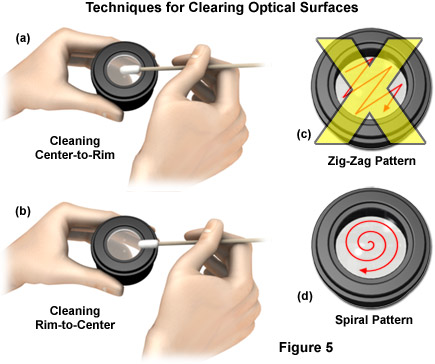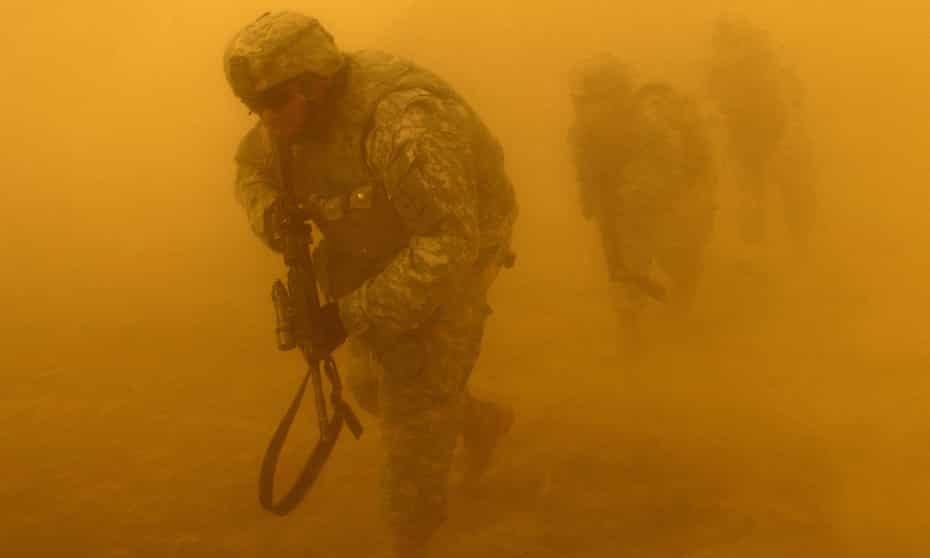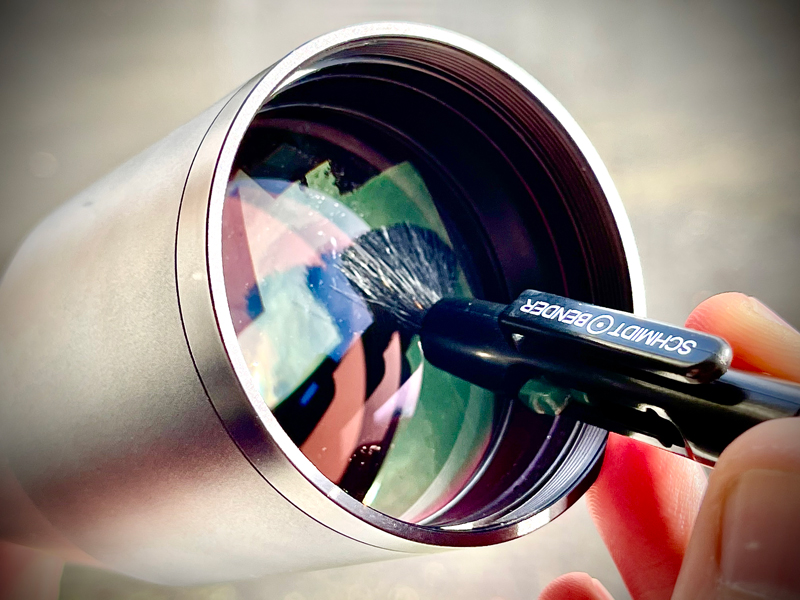We use optics of all sorts every day. Well, most of us. Glasses, sunglasses, etc. are optics. But often we go to the range or the field, and have to use dots, scopes, lasers, night vision, and more. A lot of those we paid good money for to get the best optical clarity, and use in terrible conditions. How do you keep them clean?
First, assume every environment is dusty like the desert. Dust is made of stuff that includes microscopic abrasives, so best to assume even your house has dangerous dust from the most desert/lakebed/wasteland. Also, it gets you used to the right procedure, so you remember the proper methods, buy the right cleaning materials, and carry a bit of stuff with you.
I was taught:
- Air over brush
- Brush over wiping
- Wiping always wet
Get a small blower with brush from a camera store. Like this one:
Actually, finding this picture I just learned that the brush comes off the end. But all of these types all work assembled together, so you can blow / brush as a unit and at the same actual time.
Keep the lens level (pointed sideways) or actually point down a bit to have gravity help (why knock stuff free to have it stay there!?), but not so much you can't see what you are doing. Blow as much off as you can. IF you must, use the very very soft brush to wipe away more, then blow that off also. Occasionally flick the brush to get the dust off it as we'll discuss more in a minute.
If convenient (not too big a gun or optic), etc I'll often finish with the lens pointed straight down, and give it a few good squirts of the blower to have gravity take one more help to knock loose bits off the lens entirely.
Get a bigger one for home or if you have a big optics case. I like this Giotto one because it's a rocket and is very very good:
Lots of air, deals with most issues. The rocket bit also means it stays upright as shown so doesn't get dirty etc. They make several sizes of this rocket blower. The mini is fine for most things but if you want bigger rockets, go for it as more air moves more stuff.
Do NOT use shop air (e.g. a compressor). That's too much, can damage things, and shop air has (a little) oil in it which defeats the purpose.
For more dirty, such as when it rains (or just condensates) on your dusty lenses, you wipe. Wet. Always wet. Wiping dry is also called "sanding." Don't sand your lenses. Turn the optic lens up (and don't forget, you probably have to clean both ends, so do one, then the other), flood the area with Windex (or similar, but not like denatured alcohol, as that can dry out the rubber seals holding the lenses in, etc). Use a disposable wipe and go in a very tight spiral from the center outward.
The edges are the most dirty so you want to clean them last, and... they are also less important optically if they are dirty or even scratched. May be other stuff with optics going on, all I know is people like Zeiss above do big NO NOT THAT symbols for any pattern other than spiral. Believe them.
Don't use microfiber cloths etc, as dust is bad stuff like we mentioned. The cloth absorbs some of the bad things, so you want to toss them if at all possible (same for hand washing actually. Get rid of the bad things). Hence the cleaning the brush off periodically also.
I like Kimwipes. They make a lens-specific one but I am unclear if it's just a different box label as I have used both, they seem identical.
I first used these professionally, cleaning scanner beds and cameras for work I did with Hallmark, which is another type of optic and the results matter, so aside from being a nerd for scopes and night vision, I've done this cleaning where people judged my results.
If you need to get visible ickiness out of the corners, wrap a wipe around a Q-tip, and (starting gently, plenty of liquid) go around the edge of the lens, where stuff gets trapped. The stick in the image with spirals above is doing that, but we can normally just use a slight wad of the wipe on your finger. It's fine.
This wiping is going to end like window cleaning. Okay, we'll also not assume you know how to clean windows. You blow / brush to get all the chunks off, then wipe once to get big dirt, then spray with a bit less liquid, wipe around in circles pretty fast to get all the dirt and residues off, so it's perfectly clean. Then... it should do this visible flash drying you see when good window washing. If spots (large or pinpoints) exist as it dries: it's not clean. Do it again. If it evenly flashes from wet to dry across more or less the whole lens surface, it's clean.
For emergencies, in the field, etc.
these liquid-impregnated wipes are my backup. I still try to brush or blow off first, and they are less optimal than the full procedure. But they are pretty good, and also have anti-fog properties so are good for eyepro, glasses.
I suspect all the lens cleaning wipes from legit optics makers are the same thing in different packages, but snazzy ones like Zeiss that I used to find disappear a lot. These seem consistently available.
Speaking of field use, I am not a big fan of LensPens. They are too good at trapping dirt. I do keep on on my LBE when I need to brush off bad things, to avoid using my fingers just that once. I use it only when I absolutely have to, and first I flick it a few times once deployed so any schmutz it accumulated from previous cleaning or just being in the bag I have given a good chance of knocking off.
Then use it pretty gently. More velocity than pressure, and the same spiral motion, center outward. Don't use the flat pad on the other end, at all. Ever. If yours comes off (some do) take it off and throw it away.
Last, think holistically. If you have scope caps (removable or flip open), clean them out also, as they can accumulate dust and dirt which will then transfer to the optic when closed. If lenses are set back far into the housing (or you have a sunshade) clean the accumulated dirt, including that which moves from the lens to there during the above. Usually, the same cleaning fluid on a Q-tip will do; these insets usually have fine spiral grooves to cut down on light so go around instead of in and out to clean more thoroughly and not shred the cleaning pad.
Same for other optical accessories; for protective sacrificial lenses/filters or demist shields, periodically remove them and clean both sides, as well as the lens underneath.
For killflashes (honeycombs), dust them off gently when not attached to the optic. If you manage to accumulate more dirt than that on a killflash, they are usually aluminum (some are 3D printed now) so can simply be soaked, then gently dried and blown off. Watch also for damage to the aluminum ones; if dented they generally need to simply be replaced, as re-straightening them is nearly impossible.














